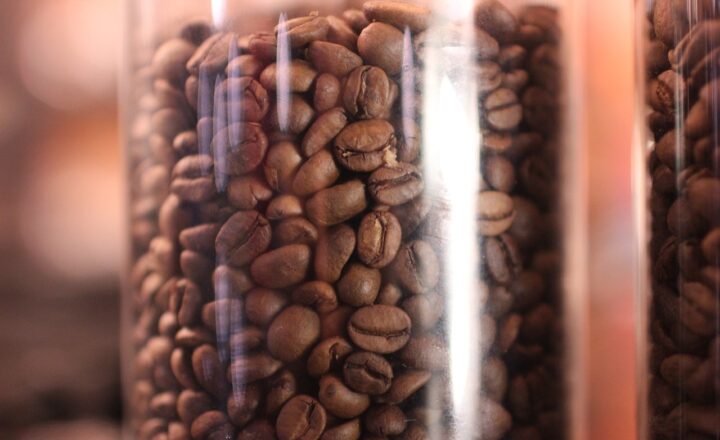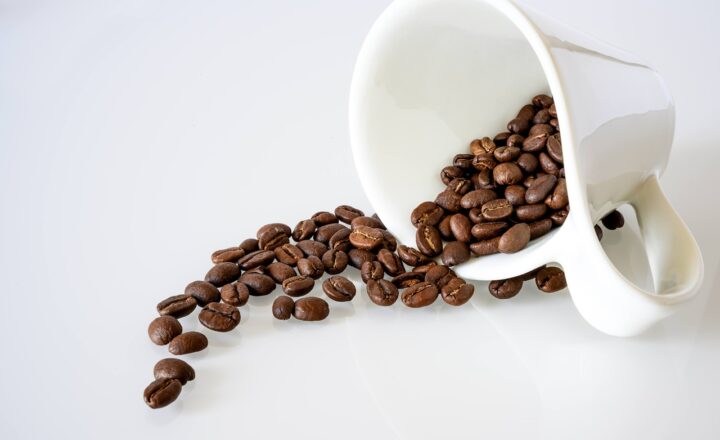
Coffee is more than just a morning ritual; it’s a complex beverage rich in flavor, aroma, and the stimulating effects of caffeine. The way coffee is roasted plays a crucial role in determining the final taste and caffeine content of your cup. In this article, we’ll delve deep into the coffee roasting process, exploring how different stages of roasting can affect both the flavor profile and the caffeine levels, ultimately shaping your coffee experience.
1. The Coffee Roasting Process: An Overview
The roasting process transforms raw green coffee beans into the aromatic brown beans we recognize. This process involves several stages, including drying, browning, and development, each of which affects the beans’ flavor and caffeine content. As green beans are subjected to heat, they undergo physical and chemical changes that yield the unique qualities of the roasted product.
– Green Beans to Roasted Beans: Coffee roasting begins with green beans, which have a grass-like taste and no sweetness. As they roast, their color changes from green to yellow, then to brown, and the scent evolves.
– Roasting Temperature and Time: Typical roasting temperatures range from 370°F to 540°F (188°C to 282°C), and the roast time varies depending on the desired roast level—from light to dark. Each roast level has distinct characteristics.
2. The Stages of Roasting: Key Phases Explained
Understanding the stages of coffee roasting is vital for appreciating how each step influences flavor and caffeine content.
– Drying Stage (0-6 minutes): The initial phase of roasting involves removing moisture from the green beans. Moisture content must drop from approximately 10% to 0% to ensure a proper roast.
– Browning Stage (6-12 minutes): As beans approach 320°F (160°C), they enter the Maillard reaction, where amino acids and sugars combine, creating a range of complex flavors and aromas. This stage is crucial for developing the coffee’s sweetness and nuanced flavors.
– First Crack (12-15 minutes): At around 400°F (204°C), beans expand, causing them to crack, indicating they’ve reached a light roast. This stage marks the beginning of flavor development and is essential for distinguishing lighter blends.
– Development Stage (15-20 minutes): Roasters can extend the development stage to intensify flavors. By varying this time, they manipulate acidity and sweetness levels, influencing the coffee’s profile significantly.
– Second Crack (18-20 minutes): Dark roasts reach the second crack around 440°F (227°C). Here, the beans crack again, and oils start to surface, leading to deeper flavors and a bolder profile.
3. How Roasting Levels Affect Flavor
The roast level greatly influences coffee’s flavor complexity, acidity, and body. Here’s how different roast levels affect the taste:
– Light Roast: Retains the natural flavors of the coffee bean, showcasing fruity and floral notes. It generally has a higher acidity and a brighter taste.
– Medium Roast: Balances the original bean flavors with roasted notes, providing a sweet, mellow taste. Popular choices often fall into this category as they offer a well-rounded profile.
– Dark Roast: The extended roasting process produces a bold, smoky flavor, leading to a more bitter taste with low acidity. The flavor of the actual beans may be overshadowed by the roasting itself.
Understanding these flavor profiles can help coffee enthusiasts select the right roast for their palate.
4. Caffeine Content: The Myths and Realities
A common misconception is that dark roasts contain more caffeine than light roasts. However, the roasting process actually reduces caffeine content slightly.
– Caffeine and Roasting: During roasting, caffeine undergoes some degradation. Thus, while dark roasts are stronger and bolder, they do not necessarily pack more caffeine. Many believe that light roasts are more potent due to their denser bean structure and lower expansion during roasting.
– Measuring Caffeine by Weight: When comparing caffeine levels, it’s essential to consider how coffee is measured. A scoop of light roast is denser, leading to higher caffeine levels by weight compared to a scoop of the less dense dark roast.
Therefore, a cup of light roast coffee might actually have more caffeine than an equivalent volume of dark roast coffee.
5. Flavor and Caffeine: Balancing Your Brew
Finding the right balance between flavor and caffeine content ultimately lies in personal preference. To achieve a satisfying brew:
– Experiment with Roasts: Taste different roasts to find the flavor profile you enjoy most. Consider light roasts for fruity notes or dark roasts for rich, bold flavors.
– Grind Size and Brew Time: The grind size and brewing duration can intensify flavor extraction. Finer grinds typically produce bolder flavors, while coarser grinds maintain subtlety and sweetness.
– Brewing Methods: Methods like French press or Aeropress can manipulate extraction rates, further impacting flavor and caffeine levels in your cup.
Ultimately, the journey of discovering your ideal coffee should be enjoyable and satisfying, with each cup providing a unique experience.
Conclusion
The coffee roasting process is intricate and profoundly impacts both flavor and caffeine content. By understanding each stage of roasting and how it influences the final cup, coffee lovers can make informed choices about their brew. Whether you prefer the bright, fruity notes of a light roast or the bold, smoky profile of a dark roast, the world of coffee offers endless possibilities for exploration.
So the next time you sip your cup of joe, appreciate the craftsmanship behind its creation and the fascinating journey from green bean to your perfect brew.






